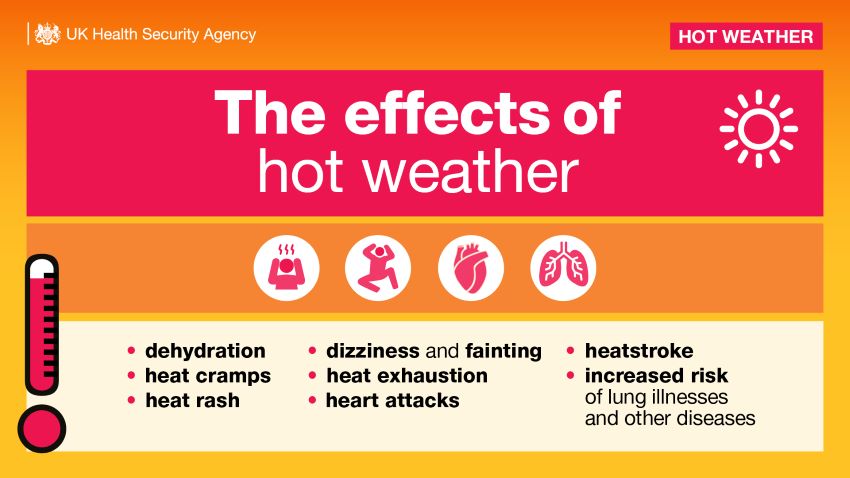
The sun is shining and most of us will be happy to see the arrival of warmer and drier weather after the wet and cool summer we have had so far. This week’s higher temperatures have triggered a yellow Heat-Health Alert, issued for England by the Met Office and UKHSA. While some may question the necessity of such warnings, it’s crucial to understand the significant health implications that accompany changes in temperature.
Over the past decade, England has experienced an increase in the frequency, duration, and intensity of heatwaves. The once-unthinkable prospect of a 40°C day in the UK became a reality in the summer of 2022, a stark reminder of our changing climate. Alongside this shift, we’ve observed a steady rise in heat-associated health impacts, particularly in heat-related deaths.
As Weather-Health Alerts warn of health impacts that may be seen as a result of the weather, they are particularly useful to health and social care sector and responders, as well as members of the public who fall within a higher-risk group, or know someone who does.
Rising temperatures and heat-associated deaths
The UKHSA’s annual heat mortality reporting, which began in 2016, reveals a concerning trend. The summer of 2022, which saw record-breaking temperatures, also recorded the highest number of heat-associated deaths. Although 2023 was comparatively cooler, we still experienced 5 heat episodes (2 amber and 3 yellow) resulting in over 2,000 heat-associated deaths. Notably, significant mortality occurred even during periods when yellow Heat-Health Alerts were issued, underscoring the importance of taking precautions at all alert levels.
Heat-associated deaths are calculated as the number of ‘extra’ deaths which occur on hot days compared to normal summer days.
As had been observed in previous years, the majority of heat-associated deaths in 2023 occurred in older age groups, particularly among people over 75 years of age. Across the summer, there were significant heat-associated deaths in all English regions except for the East of England and the North East. Adjusting for population size, the South East region had the highest heat-associated mortality rate.
Who is at risk and how does heat impact health?
Older people, babies and young children are more likely to be unwell from hot weather because their bodies are less able to regulate temperature. Higher temperatures can also increase the risk of heart attack, stroke, lung problems and other diseases.
Individuals with underlying medical conditions, serious mental health issues, and those are those who experience alcohol or drug dependence are also vulnerable. Moreover, people experiencing homelessness or living in inadequate accommodation face heightened risks during heatwaves. Our Beat the Heat guidance includes a full list of people at a higher risk of becoming unwell in hot weather.

How can we protect ourselves and others?
- Stay informed: Register to receive Weather-Health Alerts via email to stay up-to-date on potential risks.
- Look out for vulnerable individuals: Check on older neighbours, those living alone, or people with underlying health conditions.
- Keep cool: Close curtains in sun-facing rooms. Open windows when the air feels cooler outside than inside, for example at night, and try to get air flowing through your home.
- Stay hydrated: Drink plenty of fluids and avoid excessive alcohol consumption.
- Be mindful of the sun: Try to avoid sun exposure between 11am and 3pm when UV rays are strongest, and be careful of physical exertion. If you must go out, seek shade, wear a wide-brimmed hat, and apply sunscreen.
- Plan ahead: Ensure that fridges, freezers, and fans are in working order. Check that medicines can be stored at the correct temperature.
- Travel safely: If you’re on the move, take water with you and never leave anyone (especially infants, young children or pets) in a closed, parked vehicle.
- Be water-safe: Follow local safety advice if you are going into the water to cool down.
While most of us welcome the warmth of summer, it’s essential to recognise and mitigate the risks associated with high temperatures. As we continue to grapple with the realities of climate change, staying informed about and prepared for extreme weather events becomes increasingly important.
By taking simple precautions and looking out for one another, we can ensure that everyone enjoys the sunny weather safely.
